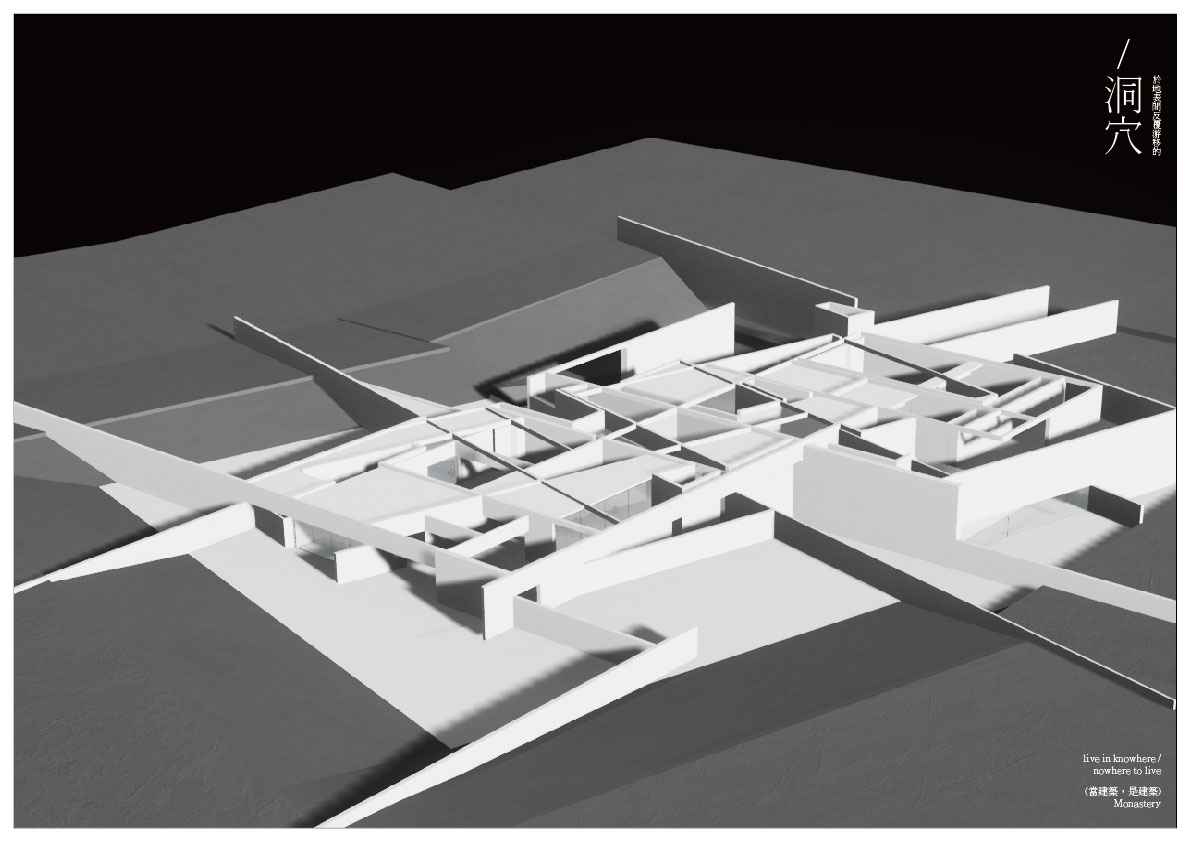
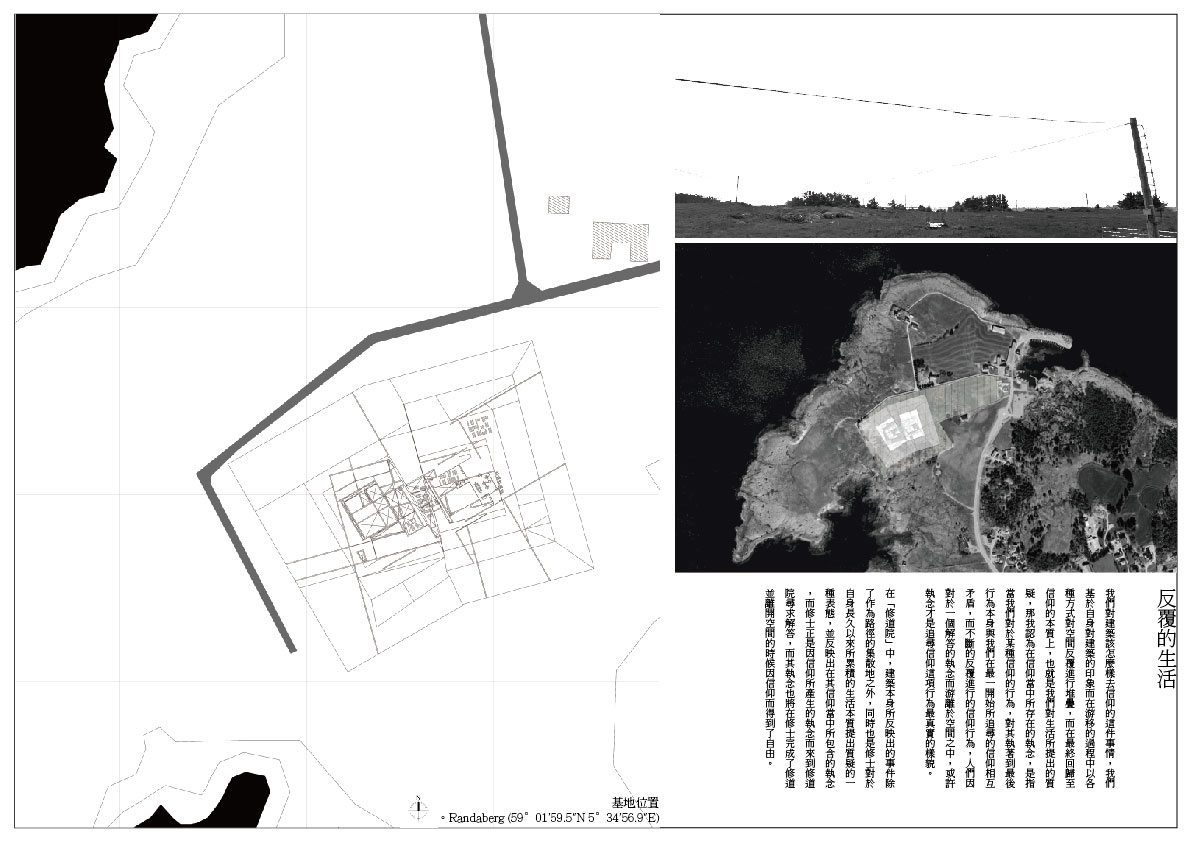
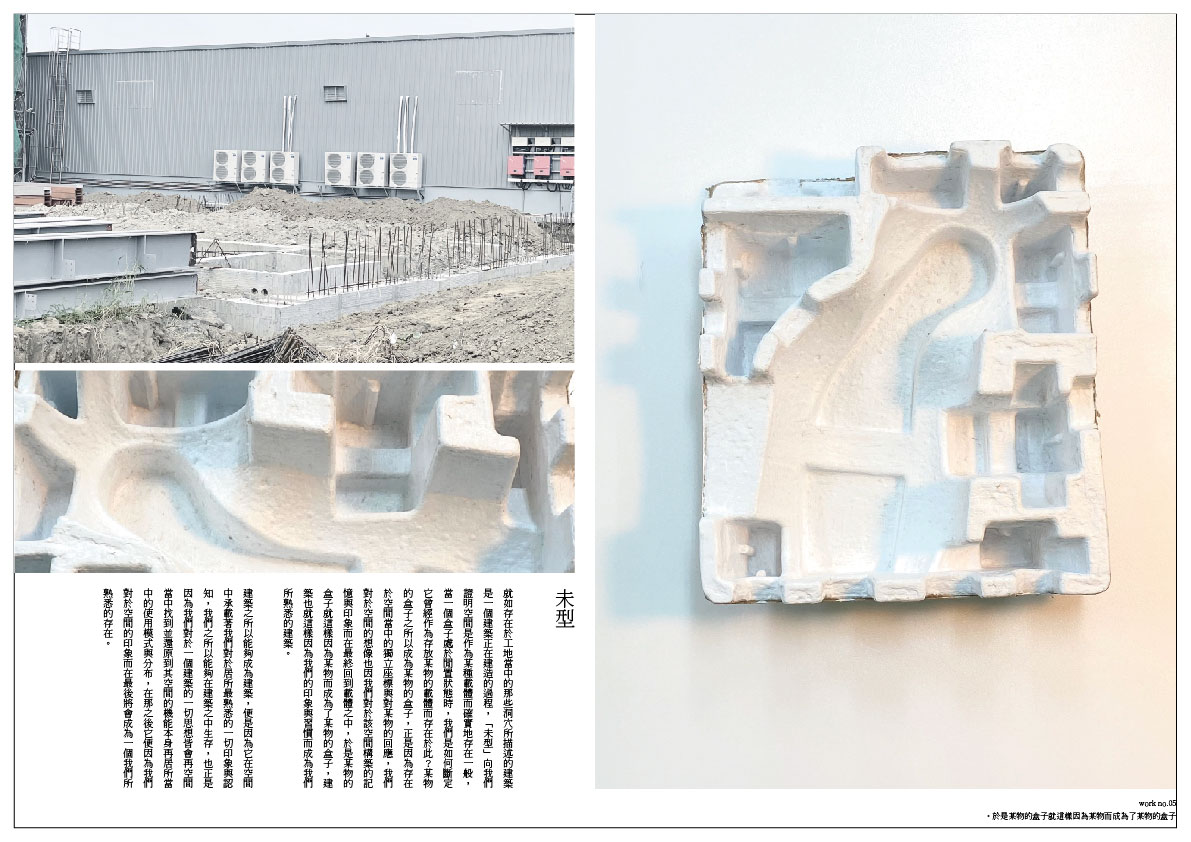
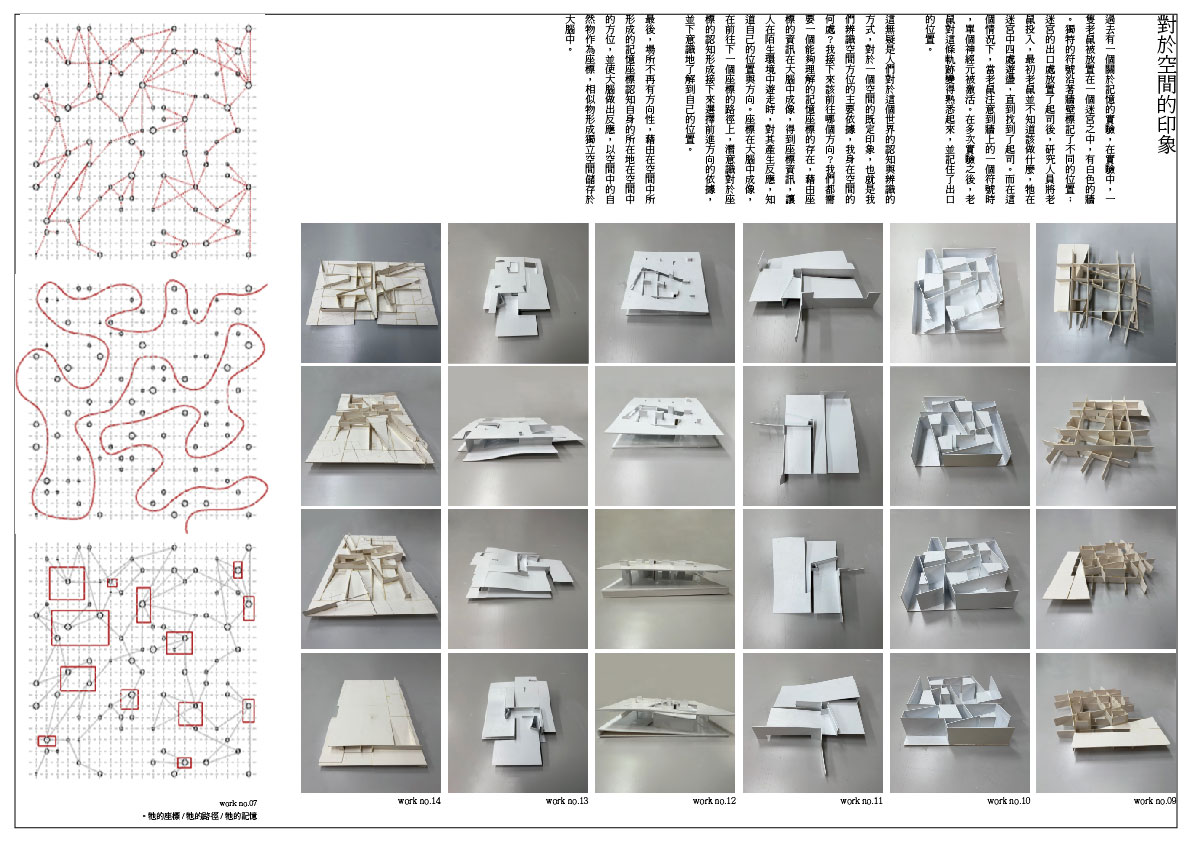
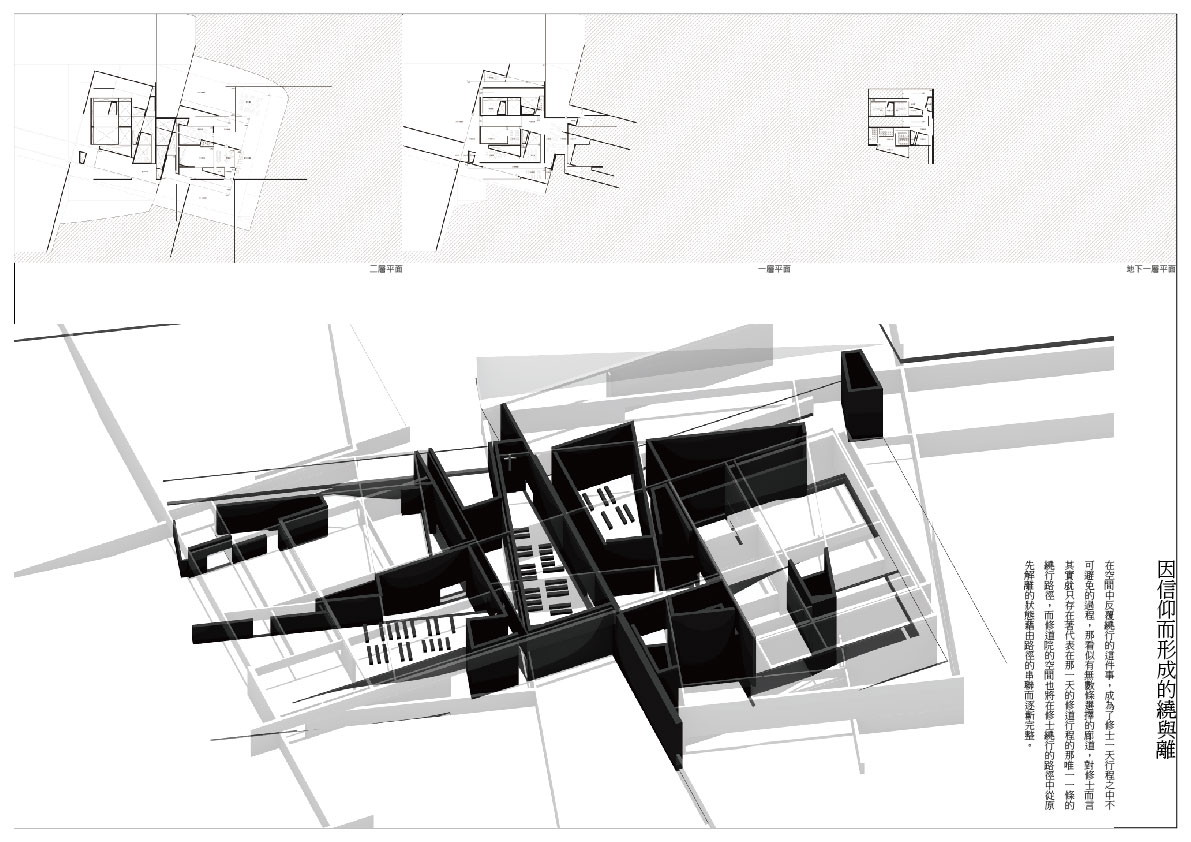
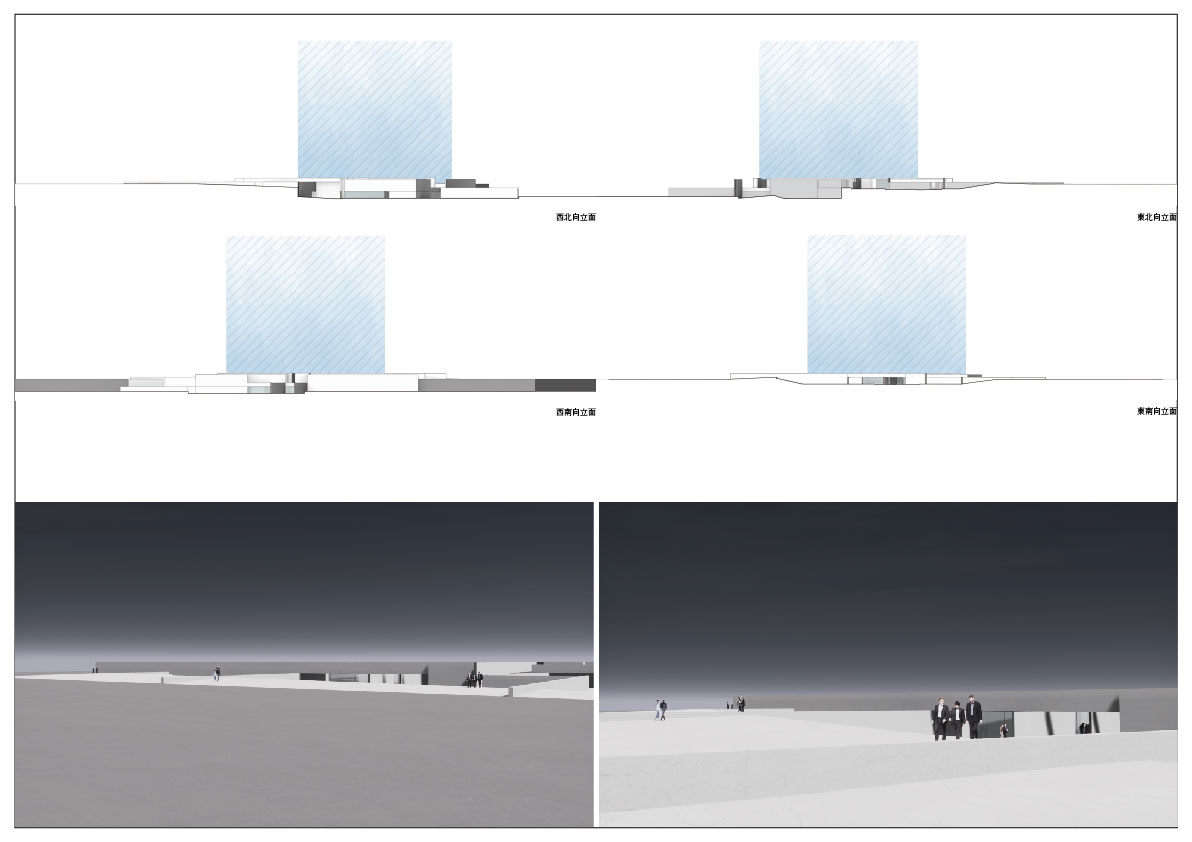
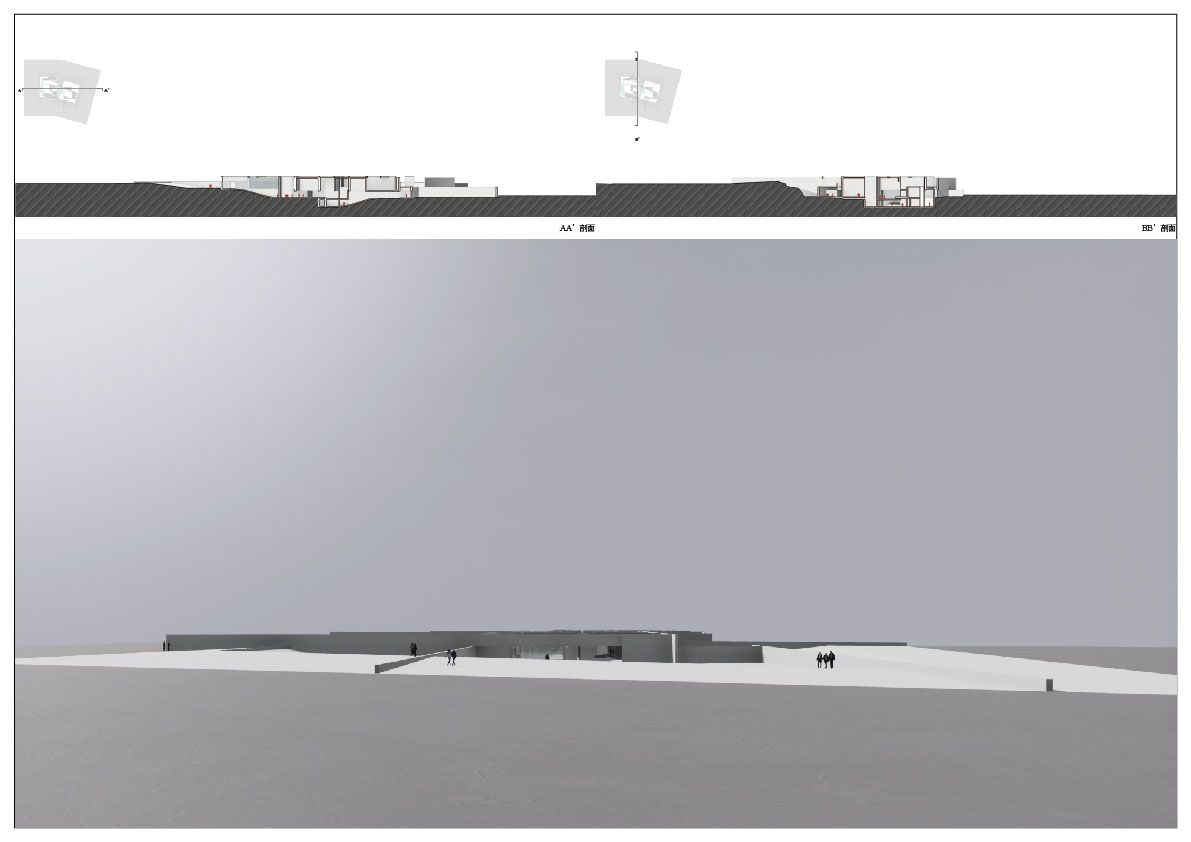
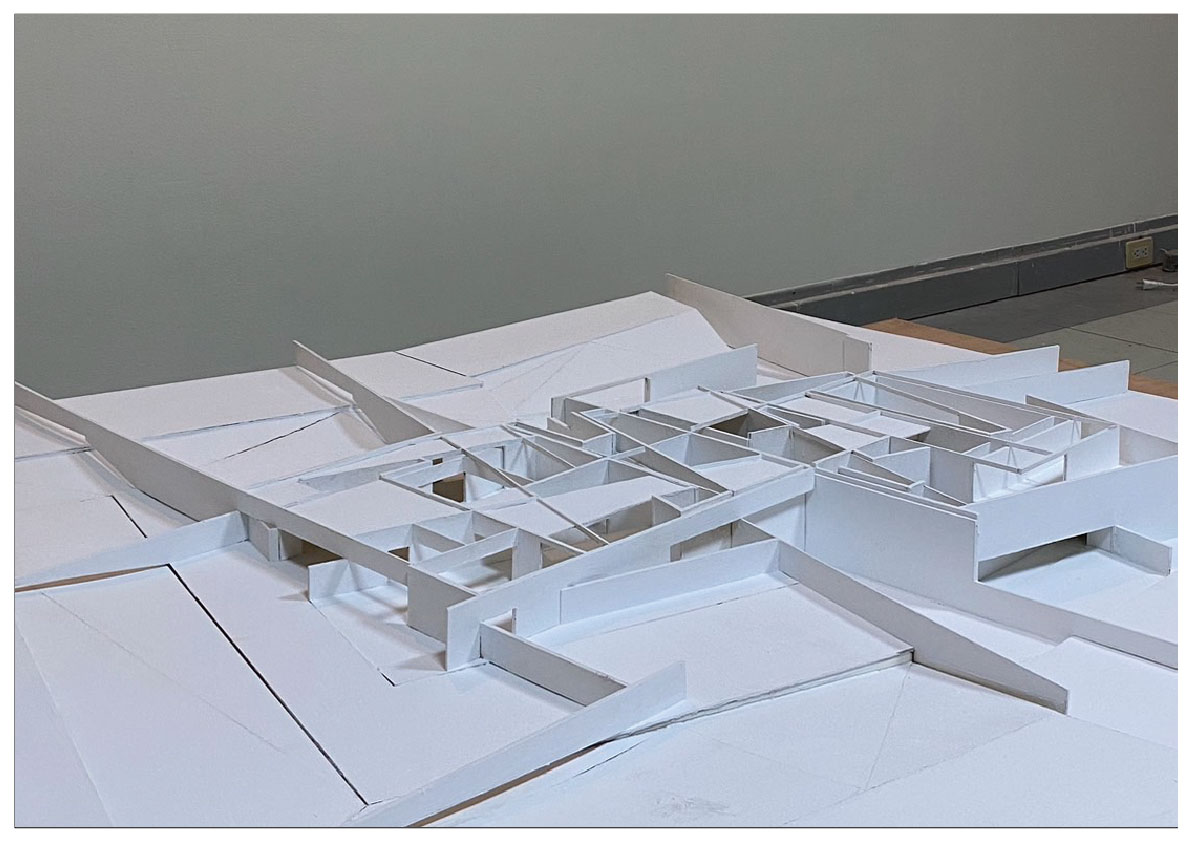
我們對建築該怎麼樣去信仰的這件事情,我們基於自身對建築的印象而在游移的過程中以各種方式對空間反覆進行堆疊,而在最終回歸至信仰的本質上,也就是我們對生活所提出的質疑,那我認為在信仰當中所存在的執念,是指當我們對於某種信仰的行為,對其執著到最後行為本身與我們在最一開始所追尋的信仰相互矛盾,而不斷的反覆進行的信仰行為,人們因對於一個解答的執念而游離於空間之中,或許執念才是追尋信仰這項行為最真實的樣貌。
在「修道院」中,建築本身所反映出的事件除了作為路徑的集散地之外,同時也是修士對於自身長久以來所累積的生活本質提出質疑的一種表態,並反映出在其信仰當中所包含的執念,而修士正是因信仰所產生的執念而來到修道院尋求解答,而其執念也將在修士完成了修道並離開空間的時候因信仰而得到了自由。
作為信仰的形象在空間中的反覆游移的過程,在其中所產生的「生活」而逐漸形成一天的路徑,而修士便以存在於路徑當中的那些能夠被識別的符號作為空間中的指標,使人能在任何時刻得知自身在建築當中的方位,從開始到游移結束之時,信仰已經在某種程度上對這陌生的所在產生了一定程度的理解,而在空間之間游移的過程中,建築的本體也就在那之後成型。
How should we place our faith in architecture? In the process of wandering between our impressions of architecture, we continuously layer and reconstruct space in various ways. Yet, in the end, we return to the essence of faith itself—the fundamental questioning of our way of life. I believe that the obsession present in faith refers to the paradox where, as we become fixated on certain acts of devotion, our relentless adherence to these actions eventually contradicts the very belief we initially pursued. This ceaseless cycle of faith-driven actions leads people to drift through spaces, seeking answers with unwavering persistence. Perhaps, in the pursuit of faith, it is precisely this obsession that most truthfully defines the nature of the act itself.
In the monastery, the architectural form reflects more than just a network of pathways—it also serves as a statement of the monks’ long-standing contemplation of their own way of life. The monastery embodies their internal struggle, exposing the obsessions embedded within their faith. It is precisely this unwavering devotion that compels monks to seek answers within the monastery. However, it is through the completion of their spiritual journey and their departure from this space that their faith ultimately grants them liberation from their obsession.
Faith, as an image that continuously shifts within space, gradually forms a pathway over the course of a day through the rhythm of life itself. The monk navigates this path by recognizing symbols embedded within the architecture—markers that allow one to always discern their position within the built environment. From the beginning to the conclusion of this wandering process, faith inevitably imposes a certain degree of understanding onto this unfamiliar place. And within this movement through space, the essence of the architecture itself is gradually shaped, taking form only through this act of inhabitation.